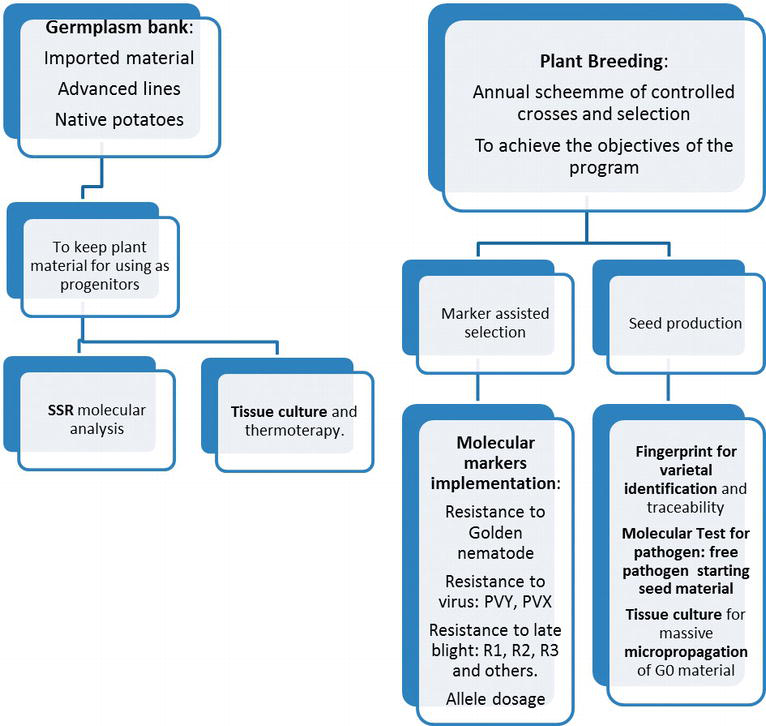Potato varieties must fulfill the requirements of the market and consumer preferences, as well as to show good agronomic performance in several environments and wide adaptation to productive systems. Traits as high yield, tuber conformation, early maturity, and resistance to biotic and abiotic stresses are the most important goals for potato breeding. ¬¬¬¬¬¬Under optimized agricultural practices, potato production can yield more from planting to harvest. To achieve this yield, it is essential to have high-quality seeds and improved cultivars as well as good agronomic practices and pest and disease control. With low technology, average yields are much lower. It is expected that through applications of biotechnology such as tissue and cell culture, genetic engineering, marker-assisted technologies, genome-assisted technologies, or a combination of all the technologies for the improvement, potato has the potential to provide an increased proportion of the food intake required for the anticipated population expansion. To obtain a precise combination of characters or the improvement of some specific traits without losing other relevant genetic controlled traits is a difficult task. Genetic engineering could be the key to reach some specific gain in a particular trait preserving good genetic background to address better development of varieties. Nevertheless, GMOs are questioned for public opinion and even forbidden in numerous countries. In this way, the role of biotechnology is an assistant for the processes of classical breeding to make them more effective and to know in a better way the plant material at the genetic level.




